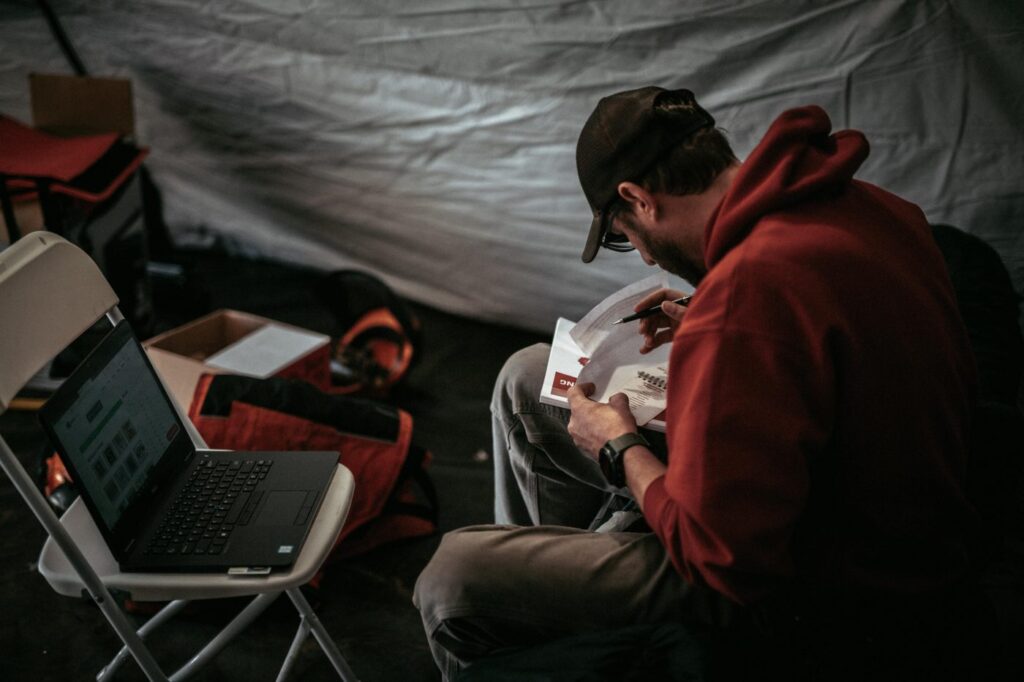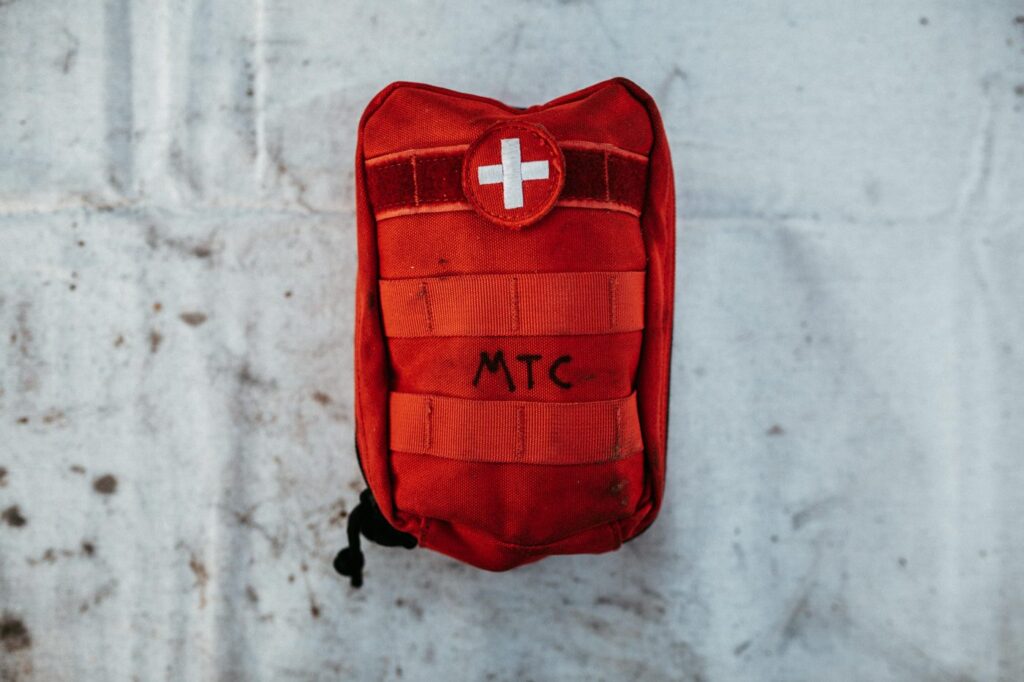With hurricane season in full force and a radical increase in nature-made disasters this year, now is the time to put emergency prep planning into action. Thanks to both modern apps and old-school tech, these days, preparing for—and weathering—a disaster is easier than ever. Here are some of the emergency preparedness apps and gadgets Team Rubicon’s disaster response volunteers recommend putting in your kit now.

Emergency Preparedness Apps and Gadgets for Staying Informed and Connected
Low-Tech: Emergency Radio
After more than a century of use, radio remains the most reliable communication method in the world. When the power goes out, satellites are inaccessible, or cell towers are damaged, radio waves will still be there. Every home should have a radio or, even better and more useful in an emergency, a crank radio, a type of emergency radio powered by a hand-pulled lever that generates a small amount of current. According to longtime disaster relief volunteer and Team Rubicon’s Deputy Director of Field Leadership and Training, Traci Rankin, crank radios are particularly helpful in remote, rural areas where power and internet outages—already common during a disaster—are especially likely, sometimes even outside of disasters. Some models use rechargeable batteries and/or solar panels that can last for two days on a charge for normal power, and also offer a hand crank as an emergency measure. Other models have features like flashlights, USB ports, or LCD screens that display local radio stations, time, or weather channels. Bottom line: For as little as $20 and as much as $110 for a high-end model, a hand crank radio is simply one of the most durable and trustworthy emergency tools on the market.
High-Tech: Sat-phone
Sat-phones use, as the name implies, satellites to connect calls and do not need cell towers or phone lines to function, making them standard equipment for backcountry hikers, survivalists, and disaster response personnel, like Team Rubicon.
“As routine communication methods are usually disrupted after a disaster, satellite phones are our lifeline and provide security as we travel to remote or austere locations and provide our services after disasters,” says TJ Porter, Team Rubicon’s Operations Support Director. “Team Rubicon looks for rugged satellite phones that are shockproof and weatherproof; that can work in the hot or humid climates we might find ourselves in, during rainstorms, or in dusty and dirty locations. We also look at battery longevity because we may have to go days or weeks without power.”
Speaking of chargers, Porter encourages everyone to want to make sure the phones can be charged through a variety of methods, whether that’s a standard dual voltage wall plug (110/240v) or 12v DC in a vehicle.
Long considered expensive and beyond the budget for the average person, today sat-phones are available for anywhere from $350 to more than $2,000.
Emergency Preparedness Gadgets and Tools
Low-Tech: Multi-tool
This is such a low-tech solution that the Roman Empire invented it nearly 2,000 years ago. Cleaning up after a disaster will require tools, such as a good knife, pliers, and a screwdriver. But just living after a disaster is hard without tools. Once-simple tasks, like opening canned food, become challenges when the contents of your home are missing or destroyed. Owning a set of tools is always a good idea, but in lieu of a full set, a hefty multi-tool is a miracle in a pinch.
There are a variety of multi-tools available, with a wide array of prices and options. Having one in your disaster preparedness kit will ensure you’re prepared to do everything from unscrewing damaged fixtures to cutting away loose debris, as well as taking care of daily tasks.
Medium-Tech: Power bank
We depend on our phones, tablets, and laptops in our everyday lives, a need that will grow during an emergency. With severe weather causing historically high power outages, Americans might be without electricity for hours to weeks after a disaster. Constantly checking weather reports or emergency instructions, or just using apps like Messenger, Signal, or WhatsApp to keep in contact with family will quickly drain devices in the wake of a disaster.
Having a backup power bank, also known as a battery pack or portable charger, can help ensure you’re able to stay in touch with family or receive important information from the authorities. There are many types of power banks, starting at around $25, with varying power outputs, charging plugs, and durability. Just remember to keep your backup bank charged before an emergency. For those who want to make larger investments, a solar-powered electric generator could even charge tools and run fans or sump pumps after disaster flooding.
Apps For Preparing for an Emergency and Riding Out a Disaster
From alerts about tornadoes to information on where to seek shelter, a variety of phone apps can help you stay safe during and after a disaster. The U.S. government’s FEMA app collates and presents weather data, especially regarding impending weather disasters. The MyRadar app can be useful even without cell reception. Other popular and helpful options include apps from the Red Cross, AccuWeather, and even the National Weather Service.
Low-Tech Disaster Preparedness Essentials
Some of the most essential tools and devices in an emergency don’t require big spending, a data connection, or a working power grid. Here are three essentials that should be in every home, car, and disaster prep kit:

A First Aid Kit
Whether you cobble one together from all the bandaids and antiseptic you have on hand or purchase a self-contained all-in-one kit, a first-aid kit should be in every home and vehicle.
A Flashlight
Always have a sturdy flashlight, like a Maglite, on hand, as well as some extra batteries.
A Ziploc Full of Matches
When the power is out and you need to light a fire under that can of beans, waterlogged matches and lighters are no good. Keep backups in firestarters in a sealed plastic bag to make sure they’re ready to use in an emergency.
A Stockpile of Water and Nonperishable Food
Having an assortment of nonperishable food and bottled water (read “7 No-Cost and Low-Cost Ways to Prepare for a Hurricane” for tips on where to stock up on these) can make a huge difference in how easily you weather an emergency.
A Can Opener
Even if you don’t invest in a multi-tool, picking up a can opener (or three) from your local thrift store will ensure you’re able to get to the emergency food you’ve set aside.
Disasters can be unpredictable, but investing in the right tools—for free or a nominal price—can ensure that you’re always prepared, no matter what might hit.



